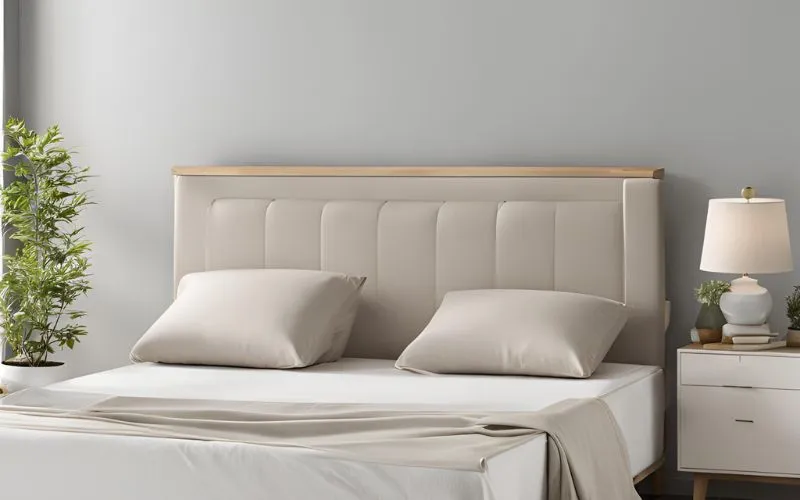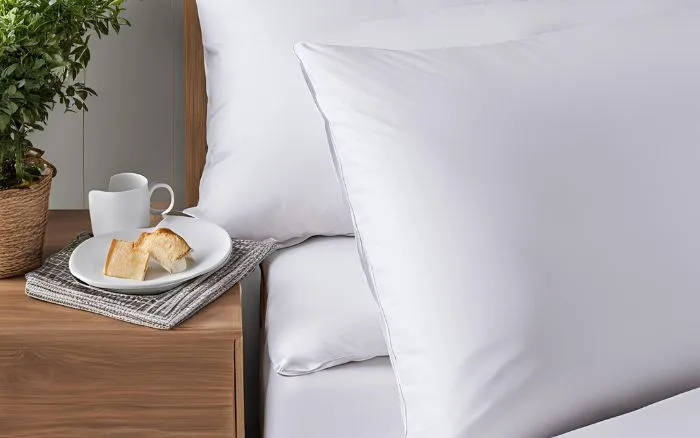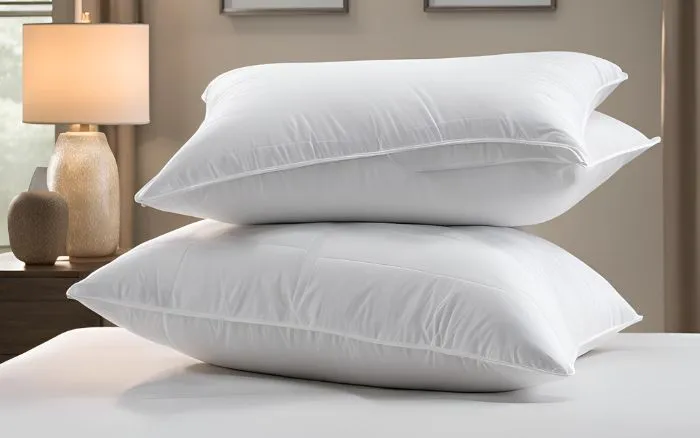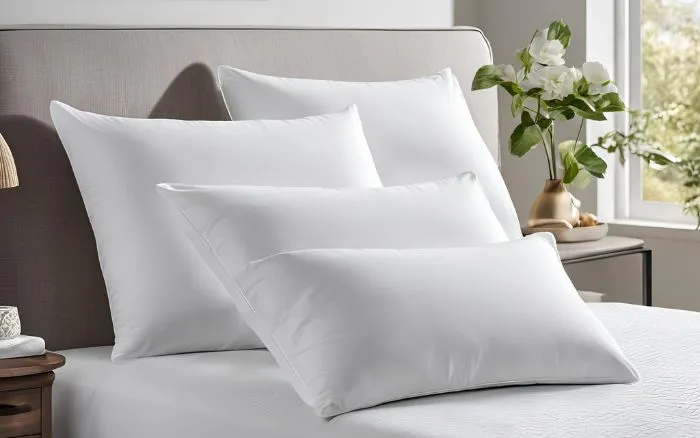Implementing Quality Control in Therapeutic Bedding Accessories

Introduction
Welcome to our comprehensive guide to quality control in therapeutic bedding accessories. In this article, we will explore the importance of maintaining high standards in the production, testing, distribution, and consumer education of therapeutic bedding accessories. Quality control plays a crucial role in ensuring the safety, effectiveness, and overall satisfaction of users. We will delve deep into the regulatory guidelines, best practices, testing methods, and quality assurance measures that contribute to the integrity of therapeutic bedding accessories.
Chapter 1: Understanding Quality Control in Therapeutic Bedding Accessories
What are therapeutic bedding accessories?
Therapeutic bedding accessories encompass a range of products designed to enhance comfort, support, and overall well-being during rest and sleep. These may include specialized pillows, mattress toppers, and support cushions that are engineered to provide ergonomic benefits and alleviate specific health conditions. From memory foam pillows to cooling gel mattress toppers, these accessories are tailored to address various needs and preferences.
The importance of quality control in therapeutic bedding accessories
Quality control in therapeutic bedding accessories is crucial for maintaining the highest standards of safety, performance, and durability. Implementing a thorough quality control process ensures that these products meet and exceed industry regulations and customer expectations. Let’s delve deeper into the key aspects of quality control in therapeutic bedding accessories:
- Material Selection: Quality control begins at the material selection stage, where manufacturers carefully choose materials that are not only durable but also hypoallergenic, moisture-wicking, and breathable to support the therapeutic needs of users.
- Production Processes: Stringent quality control measures are integrated into every stage of the production process, from cutting and stitching to assembly and finishing. This ensures that each accessory is crafted with precision and attention to detail.
- Testing Protocols: A comprehensive testing protocol is essential to evaluate the performance, comfort, and therapeutic efficacy of bedding accessories. This includes rigorous testing for pressure relief, temperature regulation, and durability to guarantee maximum benefit for the user.
- Certifications and Compliance: Quality control verifies that therapeutic bedding accessories meet industry standards and regulatory requirements, such as certifications for medical devices and adherence to textile quality standards.
Chapter 2: Quality Standards for Therapeutic Bedding Accessories
Regulatory guidelines and standards for therapeutic bedding accessories
Regulatory guidelines and standards for therapeutic bedding accessories are essential to ensure the safety, quality, and efficacy of these products. These regulations are put in place to protect consumer health and promote trust in the industry. Compliance with these standards is critical for manufacturers, retailers, and consumers alike.
- Material Safety: The regulatory guidelines cover detailed specifications for the materials used in therapeutic bedding accessories. This includes requirements for hypoallergenic materials, flame retardancy, and durability to ensure the safety and comfort of users.
- Performance Testing: Manufacturers are required to conduct rigorous performance testing to demonstrate the effectiveness of therapeutic bedding accessories in providing the intended benefits. This may involve testing for pressure relief, temperature regulation, and overall comfort.
- Labeling Requirements: The guidelines mandate clear and accurate labeling of therapeutic bedding accessories. This includes information on care instructions, material composition, and any additional features or certifications.
- Compliance with Industry Standards: In addition to regulatory guidelines, adherence to industry standards such as ISO certifications and ASTM testing methods is encouraged to further enhance the quality and reliability of therapeutic bedding accessories.
Best practices for quality control in manufacturing
Implementing best practices in quality control during the manufacturing process is essential to uphold the standards of therapeutic bedding accessories. This involves rigorous material inspections, precision manufacturing techniques, and adherence to documented procedures. Additionally, quality control protocols for manufacturing should integrate real-time monitoring and corrective actions to address any deviations from the established standards.
Chapter 3: Testing and Quality Assurance
Types of tests for therapeutic bedding accessories
When it comes to therapeutic bedding accessories, thorough testing is essential to ensure their safety, performance, and compliance with industry standards. Here are some of the key tests involved in evaluating therapeutic bedding accessories:
- Structural Integrity Testing: This test evaluates the overall strength and stability of the bedding accessories, ensuring that they can withstand regular use without compromising their structure.
- Material Composition Analysis: By conducting a detailed analysis of the materials used in the accessories, this test ensures that they are free from any harmful substances and are suitable for therapeutic purposes.
- Ergonomic Assessments: These assessments focus on the usability and comfort of the accessories, taking into account factors such as pressure distribution, support, and overall fit for different body types.
- Durability Testing: This test measures the longevity of the accessories, simulating extended usage to assess their ability to maintain their therapeutic functionality over time.
Each of these tests plays a crucial role in validating the quality and effectiveness of therapeutic bedding accessories in delivering their intended therapeutic benefits and ensuring the well-being of the users.
The role of quality assurance in ensuring product safety and efficacy
Quality assurance is crucial for ensuring the safety and efficacy of therapeutic bedding accessories. It encompasses a comprehensive set of procedures and standards that are integrated into every stage of the production and testing processes. By implementing rigorous quality assurance protocols, manufacturers can effectively minimize potential risks, identify and resolve issues, and verify the compliance of the accessories with established standards.
- Thorough Examination: Quality assurance involves a meticulous examination of raw materials, components, and finished products to ensure that they meet the required specifications for safety and efficacy. This includes testing for durability, chemical composition, and performance attributes.
- Regulatory Compliance: Quality assurance measures are essential for ensuring that therapeutic bedding accessories adhere to regulatory requirements and industry standards. This involves conducting extensive evaluations to guarantee compliance with safety, performance, and labeling regulations.
- Continuous Improvement: Quality assurance supports ongoing enhancements and innovation in the development of therapeutic bedding accessories. Manufacturers utilize feedback from quality control processes to refine product design, optimize manufacturing procedures, and implement advanced technologies.
Ultimately, quality assurance not only validates the safety and efficacy of therapeutic bedding accessories but also fosters a culture of excellence, reliability, and consumer trust within the industry.
Chapter 4: Maintaining Quality Control in Distribution and Storage
Challenges in maintaining quality during distribution and storage
The distribution and storage of therapeutic bedding accessories present inherent challenges in maintaining product quality. Factors such as environmental conditions, handling procedures, and transportation logistics can impact the integrity of the accessories. It is essential to address these challenges through stringent packaging standards, climate-controlled storage facilities, and optimized supply chain management to preserve the quality of the accessories.
Effective quality control measures for storage and transportation
Implementing effective quality control measures for storage and transportation involves the deployment of protective packaging, temperature monitoring, and traceability systems. By integrating quality control checkpoints at key stages of distribution, manufacturers and retailers can ensure that the accessories maintain their quality and integrity until they reach the end consumers. This proactive approach mitigates the risks associated with product degradation and ensures customer satisfaction.
Chapter 5: Consumer Education and Quality Awareness
The importance of educating consumers about quality standards
Educating consumers about the quality standards and benefits of therapeutic bedding accessories is essential to empower them to make informed purchasing decisions. By providing relevant information about product certifications, material specifications, and performance attributes, consumers can discern the quality and effectiveness of the accessories. Transparency in quality education fosters trust and confidence in the value of therapeutic bedding accessories.
Tips for consumers to identify quality therapeutic bedding accessories
Empowering consumers with practical tips to identify quality therapeutic bedding accessories is essential for enhancing their ability to distinguish superior products. Below are some comprehensive guidelines and examples of what consumers should look for when identifying quality therapeutic bedding accessories:
- Assess Ergonomic Features: Consumers should look for bedding accessories that offer proper spine alignment, pressure point relief, and support for sensitive areas, such as the neck and back. For example, memory foam pillows with contouring features can provide exceptional ergonomic support.
- Understand Material Characteristics: It’s important for consumers to be knowledgeable about the materials used in therapeutic bedding accessories. For instance, natural latex, known for its resilience and breathability, can be an excellent choice for mattress toppers and pillows.
- Recognize Quality Standards: Seek products that adhere to recognized quality standards, such as CertiPUR-US® and OEKO-TEX® certifications. These standards assure consumers that the bedding accessories have undergone rigorous testing for harmful substances and meet specific performance criteria.
Conclusion
In conclusion, quality control in therapeutic bedding accessories is a multifaceted endeavor that encompasses manufacturing, testing, distribution, and consumer education. Upholding high quality standards is pivotal in ensuring the safety, efficacy, and overall satisfaction of users. By adhering to regulatory guidelines, implementing best practices, and prioritizing consumer education, the industry can continue to deliver exceptional therapeutic bedding accessories that positively impact the well-being of individuals.




